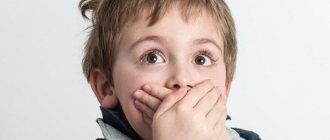Each of us is sure that such a terrible diagnosis as schizophrenia can be given to anyone, but not to him. In fact, the threat is much closer than it might seem at first glance. This disease is insidious and deceptive. Schizophrenia is characterized by symptoms that can progress for years without causing much concern or can make a person deeply disabled in just six months.
There is an opinion that, if you want, signs of schizophrenia can be found in almost any person. Mental disorders are indeed not uncommon lately. What is this connected with? Is society to blame for this? How to recognize the main characteristic symptoms and start treatment on time? Surely many are interested in the answers to these questions.
Diagnosis of schizophrenia
The Internet is full of rapid tests to determine the level of susceptibility to schizophrenic disorders. With their help, you can independently assess the degree of risk of developing the disease. But even if the test showed a tendency towards schizophrenia, it still doesn’t mean anything: it’s just a way of self-testing mental stability. Based on its results, a diagnosis is not made, but they are often the impetus for further examination.
From a medical point of view, identifying schizophrenia, especially in the early stages, is very difficult. The difficulties lie in the impossibility of using additional equipment or taking tests when diagnosing. Methods such as:
- X-ray;
- MRI;
- ICT;
- blood, urine, etc. indicators
Diagnosis of schizophrenia involves the use of an intuitive approach in the work of a psychiatrist. Its use is due to the inability to understand, explain or feel the patient’s condition. Building any logical chains between symptoms and their consequences in this case is of little use.
Modern diagnostic algorithms are based on methods developed at the beginning of the twentieth century. They are not at all outdated and are relevant to this day. Even in the presence of obvious schizophrenic symptoms, during the initial examination only a preliminary diagnosis of psychosis can be made. Schizophrenia is determined only after a certain period of observation of the patient.
The experience of a specialist, the ability to observe the patient and highlight the main thing from his stories are very important. Relatives can provide a lot of useful information that influences the correct diagnosis. Recently, neurotests have been successfully used. With their help, you can not only diagnose the disorder, but also determine the degree of its severity.
What are the dangers of schizophrenia?
First of all, you should know that this is a persistent mental disorder that occurs in a chronic form and is prone to progression. Schizophrenia is characterized by disorders that affect:
- cohesion of mental functions;
- thinking;
- emotionality;
- fading of spiritual energy.
Impaired thinking is the main symptom of schizophrenia. After the onset of the disease, the patient’s consciousness becomes divided. At some point it may be the same person as before, but within a few minutes everything can change dramatically. When exactly the change from a healthy personality to a sick one occurs is difficult to understand. In one body, or rather, his consciousness, lives the man himself and his illness.
A split in personality leads to the replacement of logical reasoning with delusional ideas. Focused thinking is lost, there is a lack of consistency, and jumping thoughts.
There may also be some symbolism and strict adherence to it. The patient himself comes up with a certain sequence of actions that will supposedly lead him to the desired goal. He is absolutely sure that you need to do exactly this and not otherwise, even if this means taking off your clothes in a public place or eating an inedible object. And any thing familiar to us from childhood can evoke completely unpredictable associations in the patient. His logical chains and conclusions are inaccessible to healthy people, including psychiatrists.
At the initial stage of the disease, confusion of thoughts is often present. In this case, the words are pronounced correctly and clearly, the sentences do not have grammatical errors, but it is absolutely impossible to understand what the patient is talking about. The text spoken by the patient has no meaning, no consistency, no purpose.
Signs of schizophrenia
The question of how to recognize a schizophrenic will be answered scientifically by the Bleuler tetrad, the so-called “four A’s”, clearly expressed in the patient (together or separately):
1. Ambivalence is a manifestation of completely opposite opinions and feelings regarding one situation, object or subject. For example, a schizophrenic may adore and hate orange juice, at the same time love to run and fundamentally deny this activity. Ambivalence can also be expressed in endless hesitation when making a choice.
2. Associative defect (in short, alogy) is a thinking disorder associated with a gross violation of logic when constructing reasoning or dialogue. Main features:
- stinginess (poverty) of speech;
- monosyllabic statements (small vocabulary);
- delay in responses (long pauses).
3. Autism is a distraction from reality with immersion in your personal, far-fetched, inner world. This sign distinguishes closed, taciturn people with limited interests who strive for isolation. They are not able to build normal communication, and therefore practically do not interact with others.
4. Affective inadequacy - completely illogical responses to current events. For example, laughter at the sight of a dying person or bitter tears at joyful news.
The listed pathological effects allow us to understand who a schizophrenic is. Signs of the disease do not necessarily appear all at once: a combination of the two factors listed above is sufficient. The result is personality changes, unsociability, loss of interest in life.
Transformation of consciousness
Delusions and hallucinatory experiences are integral manifestations of schizophrenia. These also include pseudohallucinations. These are false auditory perceptions of a strange nature. The voices that the patient hears, in his opinion, can come either from the head or from any other organ - arms, legs or stomach.
A schizophrenic cannot escape the feeling of the presence in the body of something unpleasant, forcefully imposed. He can engage in a discussion, ask questions, or argue about anything with this voice. At the same time, the audible voice, as the patient claims, does the same. The continued development of the disease is characterized by the addition of delusional ideas to hallucinations.
Delusional formation comes in various directions:
- delusion of persecution - the belief that someone is following a person or is constantly watching him;
- delusion of relationships - a strong belief that everything happening around them is directly related to the patient;
- delusion of influence - a person thinks that someone is directing his thoughts, and he cannot control them on his own;
- delusion of special meaning - a belief in one’s own greatness, power, or possession of unique abilities.
As schizophrenia develops, a condition called emotional-volitional defect occurs. It gives rise to a lack of strong-willed qualities and complete indifference to the world around us. Habitual everyday tasks that every person performs every day, without even thinking, are a real feat for a schizophrenic. He cannot bring himself to do such simple things as:
- brush your teeth;
- wash your hair;
- cook food;
- go to the shop;
- do basic cleaning of the apartment.
The emotional sphere of the patient suffers. This is expressed by the loss of the ability to show tenderness, affection, sympathy, affection, tact, and frugality. Such a person changes noticeably, he becomes tough, indifferent and cold, and sometimes even cruel. Sometimes this can even manifest itself in aggressive attacks. Relationships with loved ones change for the worse because they do not understand his condition.
Manifestations of schizophrenia
How to recognize a schizophrenic? This is the most troubling question among loved ones who have noticed changes in the behavior of a loved one. Try to be attentive, because it’s hard not to notice the obvious signs of the disease...
1. Hallucinations. They manifest themselves in the creation of a fictional world with a distorted reality. The patient has impaired perception from all senses: deceptions are visual (imaginary pictures), auditory (ephemeral voices), olfactory, gustatory and tactile.
Hallucinations are divided into true and false. In the first version of psychosis, a person “hears” sounds or “sees” images in real rooms (for example, a story about the heavenly singing of birds within the walls of his own apartment). In the second case, fictitious images are concentrated in the patient himself (for example, an assurance about snakes living in the body).
Symptoms that signal the presence of hallucinations and clearly reflect the behavior of a schizophrenic:
- laughter for no reason;
- detachment when speaking;
- sudden manifestations of anxiety;
- conversations with oneself;
- sudden changes in behavior during conversation.
2. Delusional ideas. Obsessive thoughts and delusions of persecution often manifest themselves in suspicions of close people of evil intentions. A disturbance in the functioning of consciousness may be accompanied by a flurry of complaints to various government agencies demanding that the “culprits” be punished. Or the patient besieges hospital rooms in a desperate search for imaginary diseases. So who is a schizophrenic? All pathological jealous people then fall under the manic nature of delirium... But do not rush - you should look for a fantastic, rather than plausible handwriting, for example:
- the appearance of unmotivated aggression;
- implausible stories;
- constant complaints;
- groundless fear;
- fear of people.
3. Aggression. This form of behavior is easily identified, since it is associated with harm to a living being. At the same time, aggression is not a reaction to an external stimulus; it is impulsive in nature and provoked by a disorder of thinking. Signs:
- negative attitude towards others;
- insomnia;
- impulsiveness;
- restlessness;
- unfounded suspicion;
- increased arousal.
Such symptoms allow one to suspect a pathology of a schizoid nature.
4. Movement disorders. There are two types of disturbances here: stupor and agitation. The first option is characterized by freezing in an immobilized position. A schizophrenic does not eat and does not react to others, focusing his gaze on one point. Excitement, on the contrary, is accompanied by restlessness and incoherence of speech, which is interrupted by sudden silence.
Causes of the disease
Heredity is considered to be the main factor in the development of schizophrenia. At the genetic level, even before birth, the same mechanism is laid down that is destined to one day shoot.
Psychiatrists believe that almost every person has prerequisites for the disease. A breakdown in mental balance and the inability to separate real events from illusions can be caused by:
- complex family relationships;
- excessive criticism;
- overprotection;
- frequent conflict situations;
- stress;
- nervous shocks;
- bullying
Psychiatrists and psychologists, after jointly studying the symptoms and causes of the development of schizophrenia, mutually agreed that the following factors are involved in the process:
- hereditary predisposition;
- childhood psychological trauma;
- educational disorders or pedagogical errors.
All of them have a cumulative effect and, having reached a maximum, a breakdown occurs. For some, this happens suddenly and unexpectedly for others, and for some, schizophrenia takes on a sluggish form.
It often happens that neither the patient himself nor his relatives notice the characteristic manifestations of the disease at an early stage. Subsequently, this can lead to difficulties in diagnosis and treatment. In addition, there is no guarantee that a child will not develop schizophrenia, even if both parents have relatives who have never suffered from it. The likelihood of developing a mental disorder in this category of people is very small, but it still exists.
Some scientists previously considered the evolution of humanity to be one of the fantastic reasons for the emergence of schizophrenia. Allegedly, during intensive development, some kind of malfunction occurred in brain activity, then this deviation mutated and was passed on to subsequent generations.
Another option was that the disease was contagious and transmitted like viral or infectious diseases. But with the development of progress in medicine, these hypotheses were abandoned.
Causes of the disease
The nature of the causes of the pathology has not yet been clearly established.
The most common are:
- hereditary predisposition (the risk of occurrence increases by 10%);
- intrauterine infections, complications during childbirth;
- viruses, toxic substances, bacteria that cause brain abnormalities;
- oxygen starvation of the brain.
Symptoms and signs of schizophrenia in women may occur after childbirth and are considered puerperal psychosis. Childbirth can become a trigger if there is an existing predisposition.
Characteristic features of the manifestation of the disorder
Among mental illnesses, there are those whose primary symptoms are almost similar. It happens that a patient turns to a specialist with typical signs of psychosis, but a more detailed diagnosis reveals symptoms that do not correspond to the initial diagnosis. There are indicators, the manifestation of which is characteristic only of specific mental disorders.
For schizophrenia these are:
- Openness of thoughts. The patient is sure that everything he thinks about is available to others. At the same time, a stream of some completely unnecessary information begins to get confused in the head, intertwined with other useless conclusions. All this comes to mind is completely out of place. The person loses control over these thoughts, unable to think about anything else.
- Lack of thoughts. At some point, a person, realizing who he is, what he is doing and where he is, clearly understands that he is thinking about absolutely nothing. There is just a ringing emptiness in my head.
- Delirium of physical or mental influence. This symptom is also associated with the patient’s thoughts. It seems to him that someone is controlling him, imposing his own opinion, forcing him to perform various actions. In physical terms, this is a feeling of pain for no apparent reason.
- Pseudohallucinations. These are those situations when a person hears, sees or feels voices, images, smells invented by him.
- Emotional disturbances. These include apathy and manifestations of pathological experiences.
The reasoning of a schizophrenic is built not on the basis of investigative and logical conclusions, but on signs of similarity. This is where symbolic thinking comes into play. A person, for example, gets on a bus, paying attention not to its number, and therefore the direction, but to its color, which goes well with his shoes.
It is very difficult for such people to identify a goal for themselves, but it is even more difficult to strive for it. A person with schizophrenia loses time. He sincerely does not understand how it is possible to be late somewhere or why he cannot get, for example, to the doctor half an hour before his appointed time.
Schizophrenia is characterized by symptoms of the so-called positive or negative orientation. Positive symptoms do not mean the acquisition of some good qualities; what is meant here is that the following are added to the existing characteristics of a person:
- rave;
- hallucinations;
- violation of personality boundaries.
Negative symptoms of schizophrenia involve the decline of certain brain functions and manifest themselves as follows:
- lack of initiative;
- decreased concentration, attention and memory;
- increased fatigue;
- lack of interest;
- inhibition of facial expressions and gestures;
- social isolation;
- loss of the ability to enjoy life.
Unmotivated anxiety or compulsive disorders may be precursors to characteristic schizophrenic symptoms. The patient does not find anything unusual in his actions, so all responsibility for the timely start of treatment lies with relatives or friends.
Emotional disturbances in schizophrenia manifest themselves as follows:
- development of autism;
- loss of the volitional component of the psyche;
- violation of associative thinking;
- demonstration of directly opposite feelings towards the same object;
- confidence in one’s genius, but, at the same time, lack of recognition;
- apathy.
In adults
It has been noticed that among the adult population, there are more men suffering from schizophrenia than women, and it develops at a relatively earlier age. In addition, the symptoms of the disease in representatives of the stronger sex are more pronounced and noticeable to others. How do they manifest themselves?
- Loss of communication abilities.
- Social ineptitude.
- Danger to society.
- Suicidal behavior.
Schizophrenic disorder, affecting the psyche of an adult, completely destroys some of its parts. Most often this is the sphere of self-awareness, self-respect, inner spiritual harmony and self-love. As a result, difficulties arise in communication and perception of reality. This does not happen in one day. At first, attacks occur only occasionally, but as the disease progresses, they become more frequent and gain strength.
In children
Schizophrenia can also develop in childhood. And, although this does not happen as often as in adults and adolescents, it is necessary to know its signs in order to begin the fight against the disease as early as possible. Parents should be concerned about the following behavior patterns of their child:
- Inexplicable fear. The baby stubbornly refuses to go to his room or approach a certain object. Or, on the contrary, he talks about terrible creatures coming to him, indicating their exact location.
- Unusual fantasies. During the game, the child imagines himself as a cartoon or fairy tale character and is so immersed in this role that he continues to behave in a specific manner for quite a long period.
- Decrease in intelligence. Academic performance and concentration deteriorate. The child strives for privacy, although previously he enjoyed communicating with his peers.
- Strange actions. They manifest themselves as incoherent speech and complaints about voices in the head. The child behaves warily, constantly looks around and listens, and speaks in a whisper.
- Expressing emotions that are inappropriate to the situation.
- Manifestation of cruelty or even aggression towards others.
Symptoms of schizophrenia in children are most characterized by their manifestation in a vague form. Therefore, they can be mistaken for shortcomings of upbringing without paying due attention. Childhood mental disorders develop into much greater illnesses than those acquired after the age of 20.
Nature and causes of schizophrenia
The causes of schizophrenia are not known. High levels of dopamine are often found in the brains of patients; certain infections, viral attacks, stress, and poor family communications may play a role.
To answer the question of where schizophrenia comes from, it is important to understand that the disease is mainly a disorder of selectivity of perception. A schizophrenic perceives much more information than he needs, and because he cannot process it, his brain creates its own acceptable reality.
The nature of schizophrenia is a violation of selectivity (selectivity) of perception. What is this? A person is always influenced by many stimuli, but he chooses only those that are important at the moment. For example, when crossing a road, we are interested in whether there is something coming from the right or left, whether the road is slippery, or how much we are in a hurry. The fact that two people are talking near us, there is a trash can on the sidewalk, and new shoes on our feet does not interest us, because this has nothing to do with crossing the road. This is a natural protection against overload with unimportant information. In schizophrenia, this protection is disrupted - the patient perceives everything. The human brain is not capable of perceiving so many stimuli, so confusion arises. At the same time, people have a natural tendency to put order in things, to understand them. A person suffering from schizophrenia creates a certain system in this confusion - it gives meaning to all things. However, some of his explanations are strange from the point of view of a healthy person - we are talking about manic ideas.
When schizophrenia develops, the causes of the disease include heredity. If both parents are schizophrenic, the risk of developing a congenital disease in children is 40%. But about 80% of patients do not have close relatives with this diagnosis.
Is it possible to get schizophrenia as a child? Can. A risk factor for the development of childhood disease is damage to the fetus during the perinatal period. This happens when the mother has illnesses (for example, epilepsy), alcohol or drugs during pregnancy.
Like depression, the development of schizophrenia is significantly influenced by biochemical conditions in the brain. Specifically, increased levels of dopamine, norepinephrine, or other neurotransmitters (chemicals that enable communication between single-stranded neurons). Most drugs used to treat the disease reduce the amount of dopamine in the brain.
Some schizophrenics also have structural changes in the brain - usually enlarged chambers. It takes into account the influence of some viral diseases that can damage the brain, which may result in the development of a disorder.
The onset of schizophrenia can occur in combination with any burdensome situation, mental pain (family separation, death of loved ones, severe stress, emigration, etc.). Triggers that may cause the disease include the use of marijuana, amphetamines, hallucinogens, and other drugs.
Negative circumstances are often discovered in the family during a person’s life - negative influences during pregnancy, problems during childbirth, improper upbringing. The main negative factor is the so-called. double connection, a situation in communication when the mother provides the child with two contradictory information - she strokes the child on the head, but scolds him; says she loves him, but does it indifferently.
Therefore, for the formation of schizophrenia, 2 points are needed:
- a certain vulnerability (predisposition, disposition);
- trigger (stress, drugs, etc.) that activates the disease.
Types of schizophrenia
This mental disorder can develop in several directions. Each of its forms is worth considering in more detail.
Simple . It starts from adolescence. A teenager who led an active lifestyle, studied well, played sports, and spent time with friends for his own pleasure, suddenly changed his behavior dramatically. He becomes passive and lethargic, ceases to be interested in studies and friends, and behaves as if he has no vital energy left for any action. The child becomes self-absorbed and limits communication. Delusions and hallucinations in the simple form of schizophrenia hardly bother the patient; they can appear in fragments and only occasionally.
The prognosis for this form of schizophrenia is very unfavorable. The emotional-volitional defect quickly grows, autism progresses, contact with the outside world is lost and it all ends with disability.
The development period for this type of disease is about 4-5 years.
Catatonic . The physical manifestations of this form of schizophrenia look like numbness or a kind of stupor of the whole body, while the patient also loses the ability to speak. During an attack, a person freezes in the position in which he was at the very second when the schizophrenic clinch occurred. This position may be forced and uncomfortable, but he cannot do anything. The muscles seem to freeze in this position, and this can last from a couple of minutes to several days. The most interesting thing is that there is no clouding of consciousness. The patient, having emerged from the stupor, remembers all the events and actions that took place at that time.
Stupor may be replaced by a period of excitement, when a person begins to rush about, unable to find a place for himself. Aimless and meaningless movements are constantly repeated. Attempts to stop the patient do not produce results, but only aggravate the situation. Excitement intensifies and causes resistance or even aggression.
The catatonic form of schizophrenia predicts the onset of disability within 2-3 years after the onset of the disease.
Hebephrenic . Begins to appear at the age of 15-17. Its main symptom is the patient’s inappropriate behavior, antisocial behavior, and hypersexuality. A person may behave like a mischievous, disobedient child, while the conversation may contain obscene language, obscene jokes mixed with some kind of incoherent speech and disorganization of actions. The disease can occur continuously, with a gradual increase in symptoms or in paroxysms, alternating with periods of remission.
This form of schizophrenic abnormalities develops most rapidly; a defect in emotional and volitional qualities occurs within 1-2 years.
Paranoid . This type of schizophrenia develops at a more conscious age - after 20 years. It is characterized by constant and continuous progression of the disease with the manifestation of attacks of delirium and hallucinations. A person with enviable ingenuity comes up with various crazy ideas, believes in them and tries to bring them to life. Pseudohallucinations also progress over time, they argue, discuss and even give orders to the patient to cause himself or someone around him some harm.
The attacks are distinguished by the brightness of delirium, which completely captures the person’s consciousness. It is so obvious and real that the schizophrenic has no doubt about what is happening. During this state, the patient is overwhelmed by a surge of feelings, but either a manic or depressive effect predominates. Thinking and logic very quickly become deformed, becoming unpredictable and inexplicable.
Each type of schizophrenia has signs that most characteristically convey its features.
Classification according to clinical picture
Psychological, biological and social factors that provoke the disease are identified. Almost half of the cases are of a hereditary dominant nature, when patients inherited this mental illness from their parents or close relatives.
Thanks to various classifications, it is possible to distinguish serious forms from milder manifestations of schizophrenia. Although there is no uniform division of the disease for all countries. Therefore, in their work, doctors often have to rely not only on the domestic systematization of the forms of the disease, but also carry out diagnostics according to the International Classification of Diseases (ICD).
According to one of the most common classifications, based on psychopathological symptoms, the following main forms of schizophrenia are distinguished:
- simple;
- catatonic;
- paranoid;
- hebephrenic;
- residual.
Each form has different symptoms, descriptions and features of the development of the disease. Based on these data, doctors select appropriate therapy aimed at alleviating the patient’s condition or completely curing schizophrenia.
Simple form
This type of mental disorder manifests itself in adolescence. It is characterized by a gradual, “hidden” increase in symptoms, leading to a change in the previously inherent personality traits of the child.
A distinctive feature of a simple type of disease is the absence of positive symptoms inherent in other forms, that is, hallucinations or delusions.
In simple schizophrenia, the following symptoms are noted:
- loss of interests, loss of goals in life;
- isolation, narrowing of social contacts;
- impoverishment of emotional manifestations – speech and facial expressions become poorer;
- lethargy, apathy;
- unproductiveness in intellectual development - lack of success in school or work;
- indifference to surrounding people, as well as current events.
It turns out that the previously lively and enthusiastic child loses his thirst for knowledge and begins to skip classes. For a long time, parents attribute this condition to negligence or ordinary laziness.
Over time, negative symptoms intensify, the teenager completely ceases to be interested in his life and the people around him, withdrawing into the inner world with his subjective experiences. This leads to sudden mood swings, insomnia, anger, conflict, and coldness.
Due to the slow development of the disease, the clinical picture does not appear for a long time. Because of this, the moment of seeing a doctor and diagnosis is delayed until the moment when the symptoms reach the stage of full development. Emotional dullness and dementia (dementia) become pronounced. A schizophrenic stops taking care of his appearance.
The disease of a simple form occurs continuously, without sudden jumps or spontaneous remissions.
As a result, the teenager develops mental retardation of the schizophrenic type. That is why this clinical case is considered the most malignant.
Paranoid
The most common form of pathology, diagnosed in 70% of patients, is paranoid schizophrenia. It develops at a later age, after 25 years, and is characterized by a slow, gradual course.
The main symptom of paranoid schizophrenia is considered to be systematic delusions that cannot be dissuaded. The patient suffers from various delusions (persecution, grandeur, special purpose, jealousy) intertwined with frightening visual or auditory hallucinations. Other manifestations of the disease include:
- violation of volitional functions;
- thinking disorders;
- irritability;
- unreasonable fears;
- feelings for relatives are lost, a symptom of alienation appears.
The stages of the paranoid form change in waves. At the initial stage of the disease, which can last from 5 to 20 years, the patient experiences strong suspicion, obsessive thoughts or states of anxiety, detachment and isolation. This emotional weakening of contact with others, especially close people, is not yet clearly expressed.
As the disease progresses, delusional thoughts appear, combined with hallucinations. Such ideas are completely devoid of logic, do not add up to a system, and cannot be analyzed. As the disease progresses, paranoid delusions take on an absurd character. Against this background, a depressive syndrome is possible, caused by hopelessness or one’s own inferiority.
In addition to delusional states, in the paranoid form there are no other changes in the psyche, as well as erratic behavior. There is no social or intellectual degradation or speech impairment. The patient's behavior seems adequate to others, but only until his mania is affected.
Over the years, the disease causes personality changes and leads to severe depression. The course of treatment is selected individually. Psychotherapy and medications are the main methods of treatment for paranoid schizophrenia. During periods of spontaneous remission, prevention becomes the fundamental focus of treatment.
Catatonic
This type of pathology is most often observed at a young age, although it can also appear in adulthood. Catatonic schizophrenia is characterized by impaired motor function. Abnormal movements can be very diverse. The patient may enter a stupor, freezing in an unnatural or uncomfortable position. He can remain in this position from several weeks to several years.
On the other hand, hyperactivity is observed, excitability increases, the patient performs repetitive, strange, stereotypical actions. This condition can spread to the entire body or to individual parts.
Another symptom of the pathology is “waxy flexibility,” when the muscles bend in an unnatural state. Being in an unnatural position for hours, the patient does not experience fatigue.
During an attack, patients do not feel thirst or hunger, leading themselves to complete exhaustion. Moreover, during such periods, clear consciousness is maintained, and after the condition improves, patients remember the events that happened to them and their own reaction to them.
In parallel with motor abnormalities, other symptoms inherent in schizophrenia are noticed:
- lack of verbal communication with preservation of speech functions;
- impaired thinking;
- hallucinations;
- manic delirium;
- poor facial expressions;
- depression with suicidal thoughts;
- aggressive behavior.
In case of a correct diagnosis and timely treatment, doctors give a favorable prognosis. Doses, as well as the intensity of drug therapy depend on the complexity of the disease.
Hebephrenic
Mental disorder occurs in childhood. The disease is continuous, acute and violent. Unlike the paranoid form, heberphrenic schizophrenia has a poor prognosis and severe symptoms.
At the initial stage, when a teenager shows increased activity, excitability, and an excessive sense of humor, his behavior is associated with the characteristics of the puberty period. A few months later, the situation worsens: the child begins to grimace, speech speeds up, and jokes become creepy. Such changes do not go unnoticed by others, so at this stage they turn to specialists.
Other signs of pathology include:
- infantilism;
- the ability to communicate meaningfully is lost;
- increased sexual arousal;
- excessive appetite;
- disorganization of speech, behavior or thinking;
- sudden mood swings;
- Delusions and hallucinations appear sporadically.
The patient's childhood explains the rapid increase in negative symptoms, leading to disturbances of personality and will. Therefore, treatment must be carried out by qualified doctors. In the long term, most patients are unable to build relationships with others, and many require isolation. High doses and lifelong use of antipsychotic drugs form the basis of therapy.
Residual (residual)
It is a chronic type of pathology when, after suffering psychosis, negative symptoms of schizophrenia are observed for a long time. Often the residual type is characterized by the absence of a personality defect, or it is of an unexpressed nature.
The following clinical picture develops:
- emotions become dull;
- the level of volitional activity decreases;
- difficulty expressing thoughts or making sentences appears;
- slow thinking;
- detachment from surrounding people and their lives;
- dislike of self-care, including hygiene procedures.
Residual types of schizophrenia, the symptoms of which are not as pronounced compared to other forms, more often affect the social aspects of life. Therefore, the basis is not drug treatment, but work with psychotherapists and social rehabilitation of the patient.
Remission that occurs after an attack can last from ten months to a year. Moreover, some patients may have only one attack in their entire life, and the rest of the time is a state of remission.
Similarities with other mental disorders
Different mental illnesses often have similar symptoms. So how not to confuse schizophrenia with other mental disorders? Only a doctor can do this. Self-medication only aggravates the situation and leads to the rapid development of the disease.
Each of these diseases, such as depression, multiple personality disorder or psychosis, can develop as an independent pathology or indicate the initial stage of schizophrenia. Their symptoms are similar:
- causeless feeling of guilt;
- dejected mood;
- attributing to oneself non-existent problems or successes;
- reluctance to communicate with people;
- problems with personal hygiene;
- suicide attempts.
Only an experienced specialist will be able to find differences in these mental disorders, especially since at an early stage of development, schizophrenia has practically no obvious signs.
Symptoms of schizophrenia
Clinical signs of schizophrenia can be divided into three groups:
- negative symptoms;
- productive symptoms;
- cognitive symptoms.
Productive symptoms include delusions and hallucinations, negative ones are expressed in lack of will, abulia, apathy, and cognitive signs include deviations in thinking, perception and attention.
Often, the precursors of such a disorder are increased irritability, alienation, and mood disturbances.
The first initial symptoms indicating the possible occurrence and development of the disease can be expressed in:
- speech dysfunction, slowness of speech or complete absence of speech;
- low concentration;
- absent-mindedness and inattention;
- inability and unwillingness to perform simple tasks;
- emotional rigidity and poverty;
- the emergence of new strange interests or their complete absence.
Other most common signs of any type of schizophrenia include:
- disorganization of thought processes;
- speech disorder;
- auditory, visual and tactile hallucinations;
- social isolation;
- the emergence of delusional ideas;
- catatonic reactions: freezing in awkward positions followed by acute agitation.
The most characteristic signs of schizophrenia are auditory hallucinations and pseudohallucinations, manifested in voices sounding in the head, ordering something to the patient, threatening him, as well as delusional ideas.
Influence of external factors
Since most forms of schizophrenia begin in adolescence, it is worth thinking about the extent of exposure to various external stimuli. At 15–18 years old, the child’s psyche is not yet fully formed. It is during this period that teenagers strive to try something new, to feel feelings that they have not experienced before. We are talking about alcohol, drugs and other substances that affect clarity of consciousness.
Of course, drug addiction, smoking or alcoholism cannot be the cause of the development of schizophrenia, but if such a predisposition is inherent at the genetic level, these factors give impetus to speed up the process. When using drugs, the line between real events and illusion is lost. If this is done regularly, irreversible changes in brain activity occur.
Stressful situations can also affect the formation of schizophrenic disorders. Since each person perceives this or that emotional shock differently, it is impossible to predict in advance what exactly will cause the development of a mental disorder.
Treatment of schizophrenia
A person suffering from schizophrenia requires mandatory treatment.
Most often this happens in a hospital. A combination of psychotherapy and medication has a positive effect. The result also depends on the patient’s mood, and with this, most often, a problem arises. Very rarely does a person admit that he is rapidly developing schizophrenia; usually he tries to convince himself and others of the opposite. The inability to determine the exact cause that gave impetus to the progression of the disease does not allow us to eliminate the consequences, that is, to influence the source of the disease.
About a quarter of all people with schizophrenia, with early diagnosis and properly selected treatment, return to normal everyday life. Long-term remission is achieved through the use and combination of such means as:
- use of antipsychotics;
- psychotherapy;
- rehabilitation impact;
- group therapy;
- disease control training.
The use of psychotropic medications, in addition to suppressing anxiety and alleviating other symptoms of the disorder, can have a number of side effects. There are quite a few of them, but more often than others, dystonia, limb tremors, tachycardia, pallor, dizziness, sweating, and hypotension can develop. After stopping the medication or replacing it, all body functions are restored. There may also be a tendency to gain excess weight.
Treatment
Experts will tell relatives how to behave with a schizophrenic, because proper organization of the patient’s free time is of great importance. Involvement in cultural events, walks, occupational therapy - all this has a beneficial effect on the patient’s condition during the recovery period.
As for drug treatment, it is also quite effective: according to statistics, up to 40% of people with a confirmed diagnosis return to their usual rhythm of life. Outpatient care is provided to patients during remission or minor exacerbations. In other cases, a hospital is indicated.
Often, certain antipsychotics are prescribed for treatment: Aminazine, Stelazine, Sonapax, Frenolone. In cases of depression and in cases of low-grade schizophrenia, antidepressants and tranquilizers are used, in particular Phenazepam. To suppress side effects, so-called correctors (Parkopan, Akineton) are used, which relieve tremors, stiffness, restlessness and muscle twitching. If psychotropic therapy is ineffective, the doctor may prescribe insulin comatose or electroconvulsive treatment methods.
How to live on
People suffering from schizophrenia are seriously ill, and it is not their fault. They did not choose this disease - it chose them itself. Those suffering from this mental disorder experience incredible suffering. This may continue for a long period. If a person does not turn to a specialist, and, accordingly, does not receive qualified help, then his instinct of self-preservation is dulled. This often leads to suicide.
Modern medicine makes it possible, if not to cure schizophrenia, to significantly improve the quality of life. The disease is quite unpredictable, so it is not possible to calculate the period of remission. But for people whose life is a constant struggle between reality and illusion, even a month of quality life is already a considerable period of time.
Psychotherapy methods for patients with schizophrenia differ from methods of treating other diseases. Here, long-term treatment or a lasting positive result cannot be guaranteed, but there is a need for it as long as at least the slightest piece of personality is present in the psyche.
We know that genius almost always borders on madness. Almost every outstanding person is a little schizophrenic, but not everyone suffering from schizophrenia is a genius. And earlier, and even more so, now research is being conducted on the condition of people with mental disorders. It has already been proven that their perception of the world and attitude towards creativity is different from others.
This is confirmed by descriptions of the lives of some great scientists, artists, writers, and cultural figures. I. Smoktunovsky, N. Gogol, S. Yesenin, I. Newton, Salvador Dali, Vincent Van Gogh, E. Hemingway, F. Nietzsche, John Nash, Lewis Carroll - this is not a complete list of talented people who literally made a revolution in the area where all their forces were directed. However, each of them has one unifying feature - schizophrenia. It manifested itself differently for everyone, and this is what probably prompted them to create masterpieces.
The same individuals may be among us. For every thousand people living on our planet, there are 10 schizophrenics. This is quite an impressive number of people, but current treatment methods allow the vast majority of them to remain full-fledged members of society.
Symptoms and signs of schizophrenia in children and adolescents
When problems arise in a child, his exclusion from the life of the group, solitude, and loss of interest are immediately noticeable.
Signs of schizophrenia in a child
- personality disorders;
- change in ideals, behavior, interests;
- lack of contact, gloominess, low self-esteem;
- whimsical ideas;
- excessive shyness, loss of interest in any activity;
- disturbances in the areas: emotional, motor, imaginative.
Teenage symptoms
- speech disorders: slowing down or speeding up, taciturnity, abruptness, stuttering;
- emotional emptiness, inactivity;
- thinking disorders, inconsistency of judgment, decreased intelligence;
- difficulties in communication, difficulties in studying;
- manifestations of rudeness, pride, discontent.
Sick children strive to realize themselves in unrealistic fantasies. Childhood schizophrenia is diagnosed 5 times less often than teenage schizophrenia . It is treated quite successfully.











